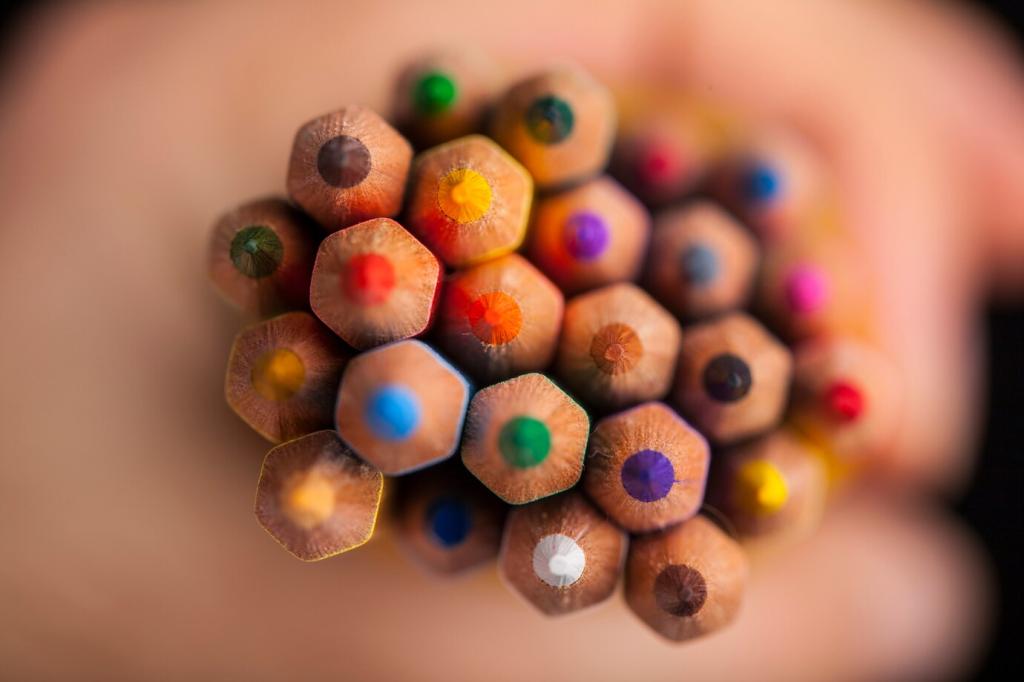
Neural Mechanisms of Color Vision: How the Brain Paints the World
Chosen theme: Neural Mechanisms of Color Vision. Journey from photons to perception as we uncover how cones, circuits, and cortical networks turn wavelengths into vivid experience. Join the conversation and subscribe for more brain-and-color insights.
From Photons to Perception: The Cone Foundations
Three cone types—L, M, and S—overlap in sensitivity yet differ in spectral peaks, enabling fine-grained comparisons across wavelengths. Their relative activation patterns form the raw code that later circuits refine into color experience.
From Photons to Perception: The Cone Foundations
Opsin proteins, encoded by genes on the X chromosome for L and M cones, shift spectral sensitivity through amino acid tweaks. Tiny genetic variations can subtly alter hue discrimination, shaping personal color worlds without obvious awareness.


Wiring Color: Opponent Processing and Retinal Microcircuits
Center–Surround and Contrast
Horizontal and amacrine cells orchestrate center–surround receptive fields, so a cone’s signal is interpreted relative to its neighbors. This comparative wiring heightens color edges and preserves detail under changing illumination, priming perception for stability.
Opponent Channels: L–M and S–(L+M)
Retinal ganglion cells combine cones to produce red–green and blue–yellow opponent channels. These cells fire for differences, not absolutes, encoding hue contrasts that resist lighting changes. Comment with objects that flip color for you under warm lamps.
Engage: Try an Afterimage Experiment
Stare at a saturated red square for thirty seconds, then look at a white wall. You should see a green afterimage, revealing opponent fatigue and rebound. Share your results and describe how brightness changes tweak the perceived afterimage strength.



Stability in a Changing World: Color Constancy
Retinex-style computations compare reflectance across scenes to estimate lighting spectra. By discounting the illuminant, the system stabilizes perceived color. Try comparing a banana indoors and outdoors; notice how its yellowness survives dramatic lighting shifts.
Diversity in Experience: Development and Variations
Infants are sensitive to chromatic contrasts early, but language and experience sharpen category boundaries. Neural populations become tuned through exposure, refining hue perception. What childhood memory shaped your sense of “blue”? Share your story and tag a friend.
Color in Cognition, Emotion, and Computation
01
Language and Neural Boundaries
Words can nudge perception; categorical labels align with representational boundaries in cortex. Training shifts discrimination around learned terms. Reflect on a color you renamed after learning design vocabulary, and describe how your perception shifted afterward.
02
Synesthesia and Cross-Talk
Grapheme–color synesthesia links letters and hues, possibly via atypical connectivity or disinhibited feedback. These stable associations illuminate how higher areas influence early color processing. Do certain weekdays feel colored to you? Comment and compare personal mappings.
03
Models and Neural Networks
Computational models borrow opponent coding and constancy principles to stabilize color under shifting lights. Training vision networks with augmentation mirrors biological inference. Subscribe if you want code walkthroughs connecting neural circuits to practical color-robust algorithms.
